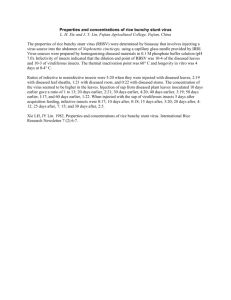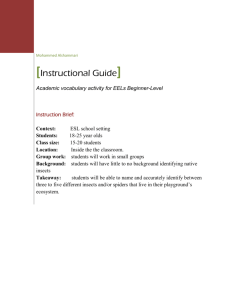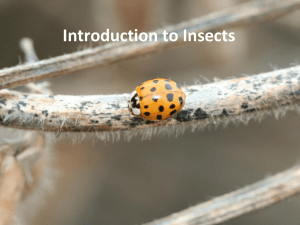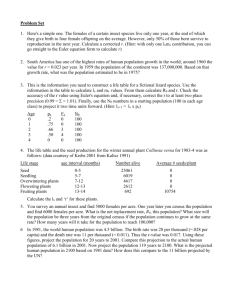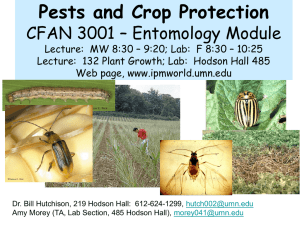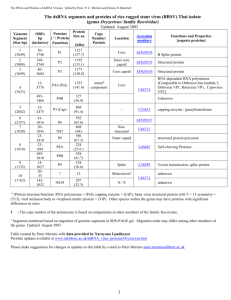Transmission of rice ragged stunt disease K. C. Ling, E. R. Tiongco
advertisement
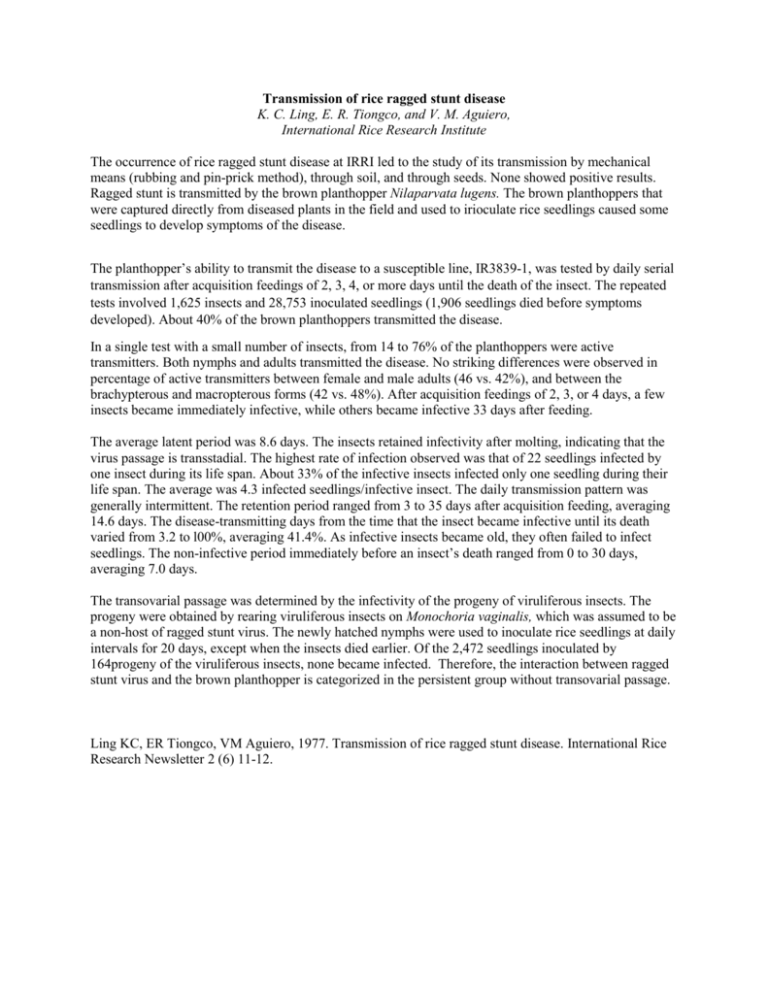
Transmission of rice ragged stunt disease K. C. Ling, E. R. Tiongco, and V. M. Aguiero, International Rice Research Institute The occurrence of rice ragged stunt disease at IRRI led to the study of its transmission by mechanical means (rubbing and pin-prick method), through soil, and through seeds. None showed positive results. Ragged stunt is transmitted by the brown planthopper Nilaparvata lugens. The brown planthoppers that were captured directly from diseased plants in the field and used to irioculate rice seedlings caused some seedlings to develop symptoms of the disease. The planthopper’s ability to transmit the disease to a susceptible line, IR3839-1, was tested by daily serial transmission after acquisition feedings of 2, 3, 4, or more days until the death of the insect. The repeated tests involved 1,625 insects and 28,753 inoculated seedlings (1,906 seedlings died before symptoms developed). About 40% of the brown planthoppers transmitted the disease. In a single test with a small number of insects, from 14 to 76% of the planthoppers were active transmitters. Both nymphs and adults transmitted the disease. No striking differences were observed in percentage of active transmitters between female and male adults (46 vs. 42%), and between the brachypterous and macropterous forms (42 vs. 48%). After acquisition feedings of 2, 3, or 4 days, a few insects became immediately infective, while others became infective 33 days after feeding. The average latent period was 8.6 days. The insects retained infectivity after molting, indicating that the virus passage is transstadial. The highest rate of infection observed was that of 22 seedlings infected by one insect during its life span. About 33% of the infective insects infected only one seedling during their life span. The average was 4.3 infected seedlings/infective insect. The daily transmission pattern was generally intermittent. The retention period ranged from 3 to 35 days after acquisition feeding, averaging 14.6 days. The disease-transmitting days from the time that the insect became infective until its death varied from 3.2 to l00%, averaging 41.4%. As infective insects became old, they often failed to infect seedlings. The non-infective period immediately before an insect’s death ranged from 0 to 30 days, averaging 7.0 days. The transovarial passage was determined by the infectivity of the progeny of viruliferous insects. The progeny were obtained by rearing viruliferous insects on Monochoria vaginalis, which was assumed to be a non-host of ragged stunt virus. The newly hatched nymphs were used to inoculate rice seedlings at daily intervals for 20 days, except when the insects died earlier. Of the 2,472 seedlings inoculated by 164progeny of the viruliferous insects, none became infected. Therefore, the interaction between ragged stunt virus and the brown planthopper is categorized in the persistent group without transovarial passage. Ling KC, ER Tiongco, VM Aguiero, 1977. Transmission of rice ragged stunt disease. International Rice Research Newsletter 2 (6) 11-12.
